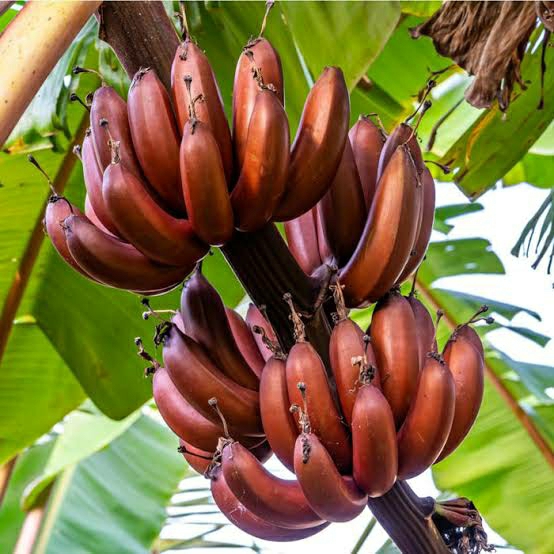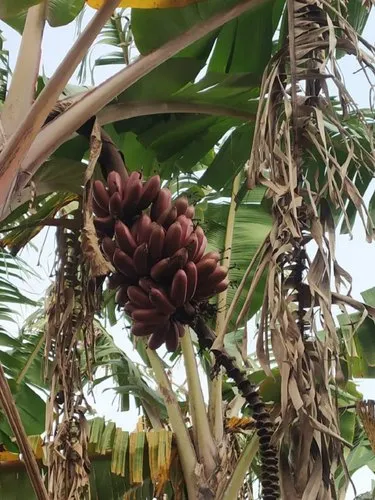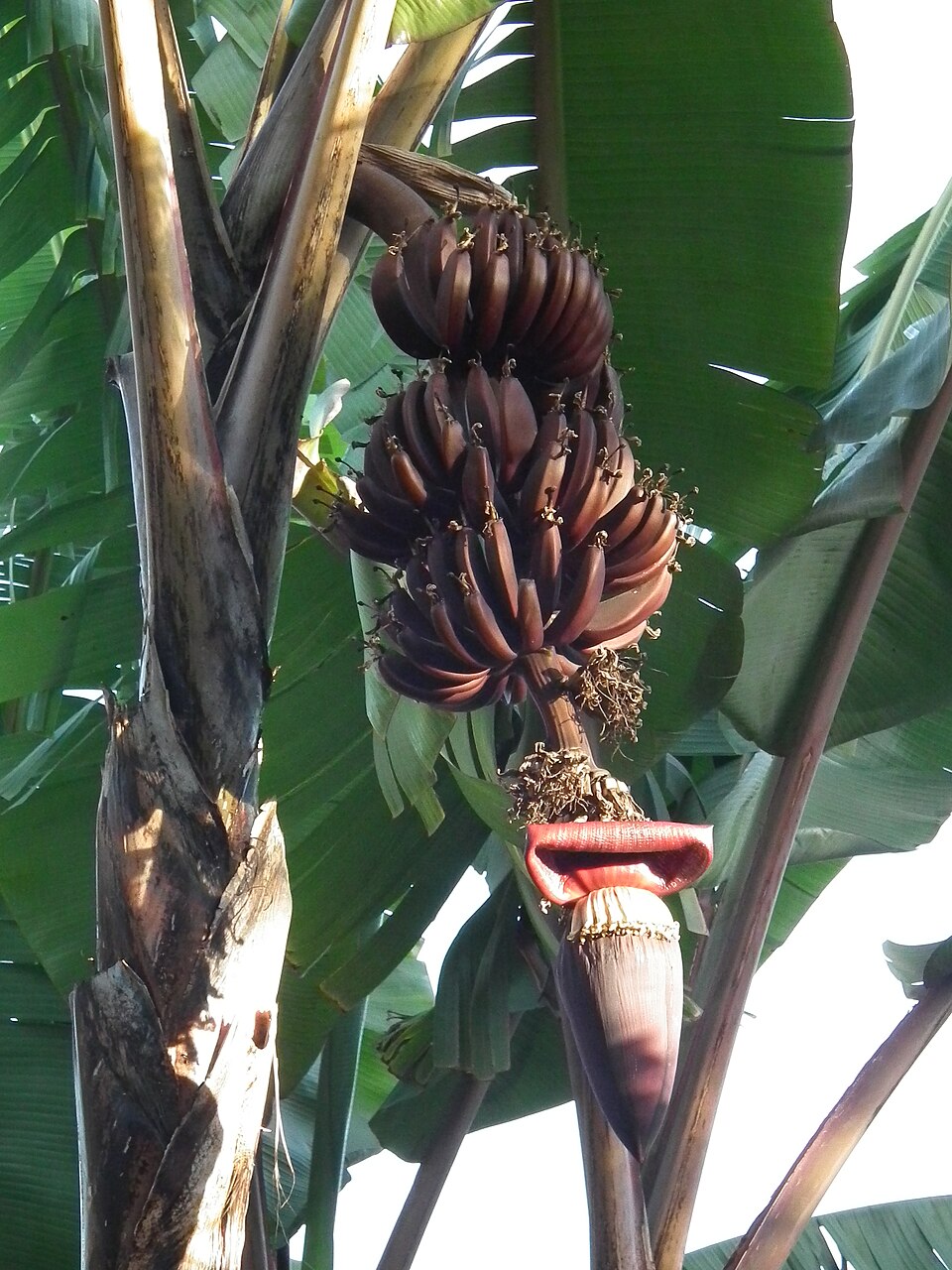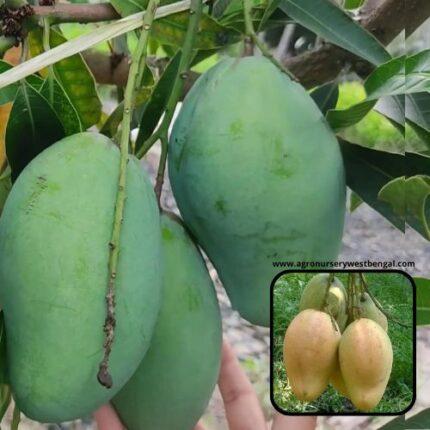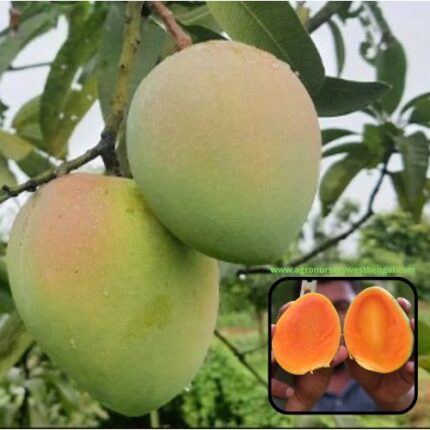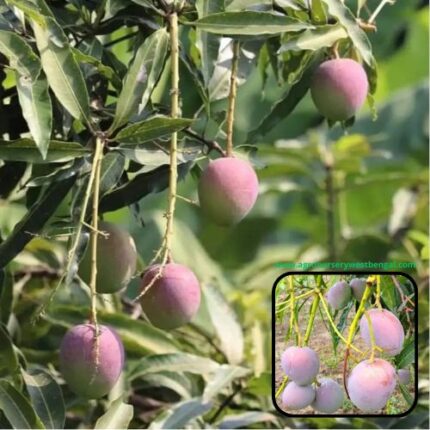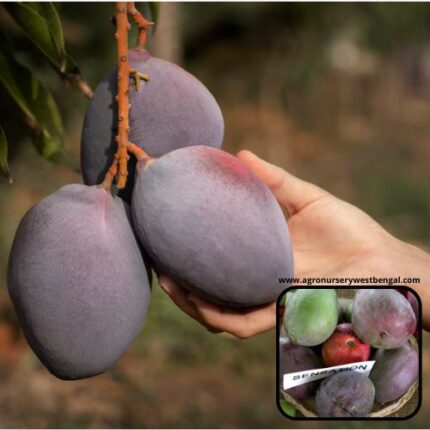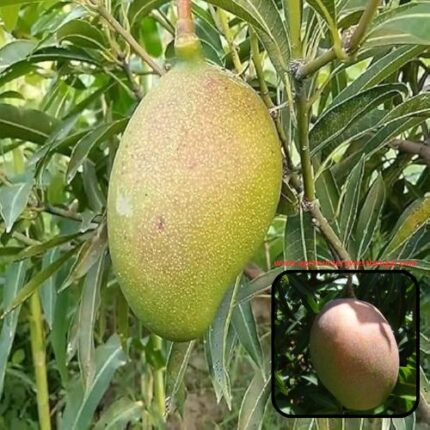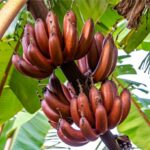
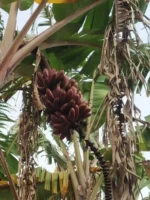
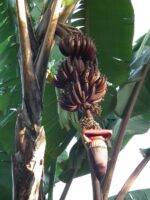
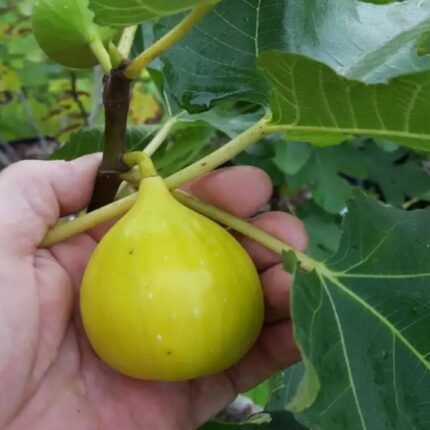
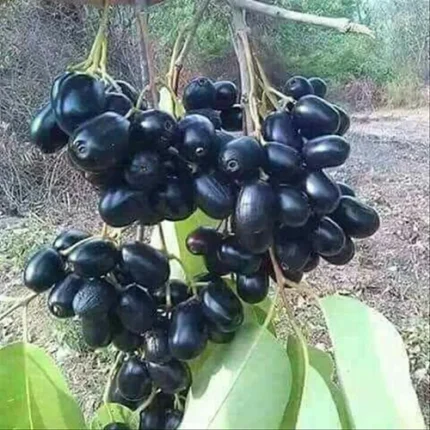
Red Banana fruit plants
₹899 Original price was: ₹899.₹499Current price is: ₹499.
The “Red Banana” is a captivating and increasingly popular variety of banana, distinct from the common yellow Cavendish. Its striking color and unique flavor make it a stand-out in the fruit world. While there are several red banana cultivars, ‘Red Dacca’ is one of the most well-known.
Here’s a detailed description of the Red Banana fruit:
1. Botanical Classification:
- Scientific Name: Musa acuminata (AAA Group) ‘Red Dacca’ is the most common designation, but other synonyms exist like ‘Cuban Red’ or ‘Jamaican Red’.
- Family: Musaceae (Banana family).
2. The Plant (Tree):
- Growth Habit: Like other banana plants, it’s a large herbaceous plant (often mistakenly called a tree) that grows from an underground rhizome. Red banana plants can be quite ornamental, sometimes exhibiting reddish tints in their stems and leaves.
- Habitat: Thrives in tropical and subtropical climates, extensively cultivated in East Africa, Asia (especially India), South America, and the United Arab Emirates.
3. The Fruit:
- Appearance:
- Shape: Generally shorter and plumper than the common yellow Cavendish banana, often described as being squatter.
- Skin: The most distinguishing feature is its skin color, which ranges from deep red to purplish-red or maroon when fully ripe. Unripe red bananas will be green, and as they ripen, they transition through various shades of red and purple, sometimes with hints of orange. The skin is usually slightly thicker than that of yellow bananas.
- Flesh: When ripe, the raw flesh is creamy, soft, and can range in color from light pink to pale orange or yellowish-cream.
- Seeds: Contains tiny, edible black seeds, similar to other bananas, but these are generally inconspicuous.
- Taste and Flavor Profile:
- Sweetness: Red bananas are notably sweeter than yellow Cavendish varieties.
- Unique Notes: Many describe the taste as having a subtle raspberry or berry-like flavor, sometimes with hints of mango or an earthy undertone. It offers a more complex and robust flavor experience than standard yellow bananas.
- Texture: The flesh is softer and creamier than yellow bananas, almost custard-like, especially when fully ripe.
- Aroma: A ripe red banana has a pleasant, sweet, and slightly fruity aroma.
4. Ripeness:
- Color Change: A key indicator of ripeness is the skin’s color deepening to a full, rich red or maroon. Avoid green or overly firm red bananas for eating raw, as they won’t have developed their full sweetness and soft texture.
- Feel: Ripe red bananas should be slightly soft to the touch, similar to ripe yellow bananas.
- Bruising: Like all bananas, they are best eaten when unbruised. Brown patches indicate ripeness and sweetness, similar to yellow bananas.
- Ripening: Red bananas ripen in a few days at room temperature and should generally be stored outside of refrigeration.
5. Culinary Uses:
- Fresh Eating: The most common way to enjoy red bananas is raw, peeled, and eaten out of hand. They are excellent additions to fruit salads, oatmeal, or yogurt.
- Desserts: Their enhanced sweetness and unique flavor make them superb for desserts like smoothies, banana bread, muffins, pancakes, and ice cream.
- Cooking: Like yellow bananas, they can be baked, fried, or toasted. Their firmer texture when slightly underripe can make them suitable for certain cooking applications where they won’t become mushy too quickly.
- Dried: Also commonly sold dried.
6. Nutritional Value and Health Benefits: Red bananas are a nutrient-dense fruit with several health advantages:
- Higher in Beta-Carotene: The reddish hue indicates a higher concentration of beta-carotene (a precursor to Vitamin A) compared to yellow bananas. Beta-carotene is a powerful antioxidant, beneficial for vision, skin health, and immune function.
- Higher in Vitamin C: They generally contain more Vitamin C than yellow bananas, boosting immunity and protecting against oxidative stress.
- Rich in Potassium: Like all bananas, they are an excellent source of potassium, vital for maintaining healthy blood pressure, fluid balance, and muscle function.
- Good Source of Fiber: High in dietary fiber, which aids digestion, promotes gut health, and helps prevent constipation.
- Contains B Vitamins: Provide Vitamin B6 (important for metabolism and brain health) and other B vitamins.
- Antioxidants: Rich in various antioxidants beyond beta-carotene, including anthocyanins (contributing to their red color), which help combat free radicals.
- Energy Boost: Provide natural sugars (sucrose, fructose, glucose) for instant and sustained energy.
- Weight Management: Low in calories and high in fiber, contributing to satiety and potentially aiding in weight management.
In summary, the Red Banana is a visually striking and exceptionally sweet banana with a creamy texture and subtle berry-like notes, offering a richer flavor and enhanced nutritional profile compared to its yellow counterpart

